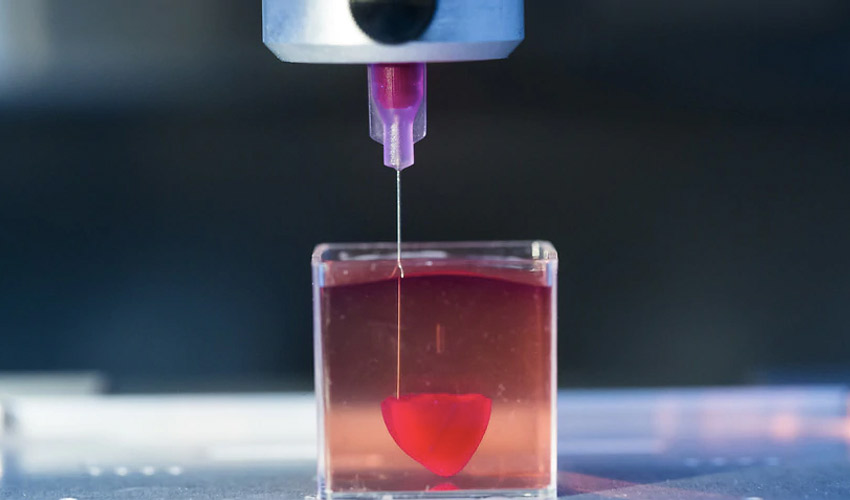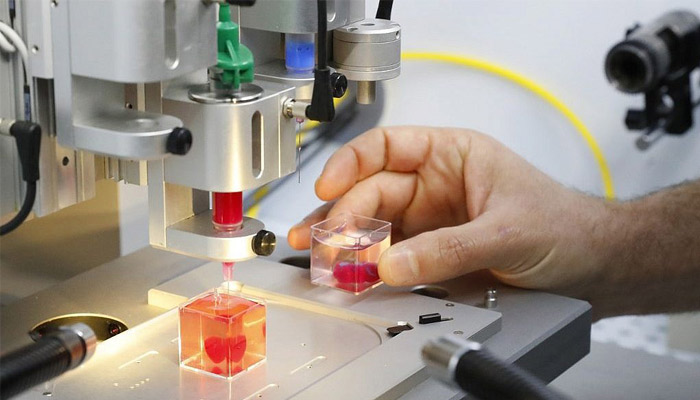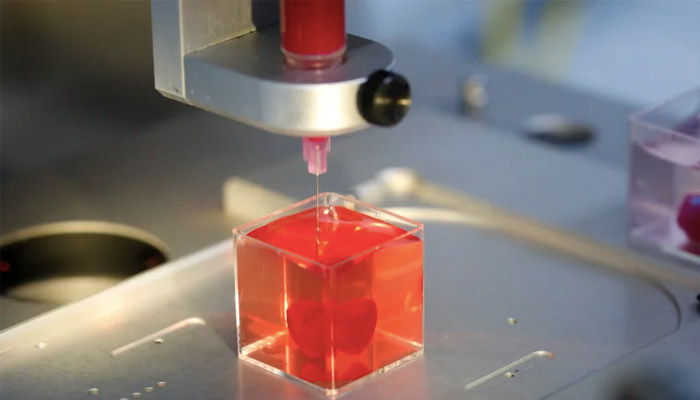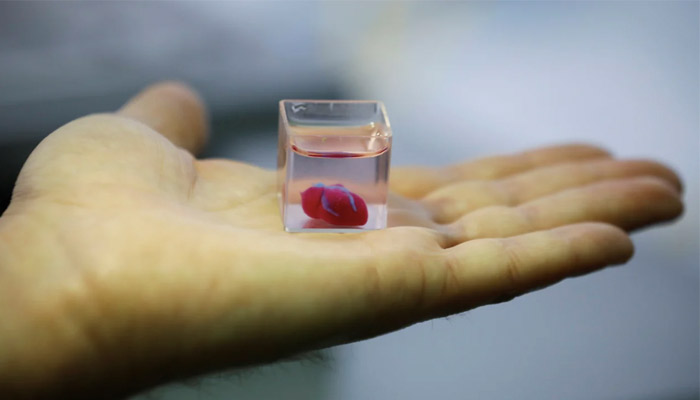Researchers 3D print a heart with human tissue and blood vessels

For the first time ever, Israeli scientists from the University of Tel Aviv 3D printed a small vascularised heart that combines human tissue taken from a patient. The 3D printed heart completely matches the immunological, cellular and anatomical properties of a human patient. Until now, scientists have been successful in printing only simple tissues without blood vessels. The findings were published on April 15th in a study in Advanced Science.
“This is the first time anyone anywhere has successfully engineered and printed an entire heart replete with cells, blood vessels, ventricles and chambers,” said Prof. Tal Dvir of TAU’s School of Molecular Cell Biology and Biotechnology, who led the research for the study. Heart disease being the leading cause of death among men and women in the United-States, heart transplantation is currently the only treatment available to patients with end-stage heart failure. The issue of shortage in heart donors has led to the need for alternative approaches to regenerate diseased hearts.

Prof. Tal Dvir explained, “This heart is made from human cells and patient-specific biological materials. In our process these materials serve as bioinks, substances made of sugars and proteins that can be used for 3D printing of complex tissue models. People have managed to 3D-print the structure of a heart in the past, but not with cells or with blood vessels. Our results demonstrate the potential of our approach for engineering personalised tissue and organ replacement in the future”.
At the moment, the 3D printed heart is only the size of a rabbit’s heart. However, the technology to print a larger human heart should be the same. Furthermore, “The biocompatibility of engineered materials is crucial to eliminating the risk of implant rejection, which jeopardises the success of such treatments,” Prof. Dvir says. “Ideally, the biomaterial should possess the same biochemical, mechanical and topographical properties of the patient’s own tissues.”

The researchers are now planning on culturing the printed hearts in the lab and “teaching them to behave” like hearts. The next step will be to transplant the 3D-printed heart in animal models. “We need to develop the printed heart further. The cells need to form a pumping ability; they can currently contract, but we need them to work together”, concluded the professor.

What is your thoughts on this new research? Let us know in a comment below or on our Facebook and Twitter pages! And remember to sign up for our free weekly Newsletter, to get all the latest news in 3D printing send straight to your inbox!






